Abstract
A reproducible method was developed to determine the ability of chlamydial antigens to stimulate lymphocytes from volunteers. In tests repeated 4 to 14 times, the cells from a given volunteer gave a relatively narrow range of responses, but there were great differences in the mean response of different volunteers. In the entire group of 52 volunteers, lymphocyte stimulation was significantly associated with the presence of antibody, but in a given individual results of one test did not aid in predicting the results of the other. A majority of persons with either antichlamydial antibody or elevated lymphocyte stimulation, or both, did not have a history of signs or symptoms within a spectrum of chlamydial diseases. This may reflect the great frequency of asymptomatic infection with these organisms. The lymphocytes of some individuals were stimulated to a significantly greater degree by antigens of one chlamydial species (Chlamydia trachomatis or C. psittaci) than by the other. These and other cell-mediated reactions in human chlamydial infections, and their possible medical significance, are under continued study.
Full text
PDF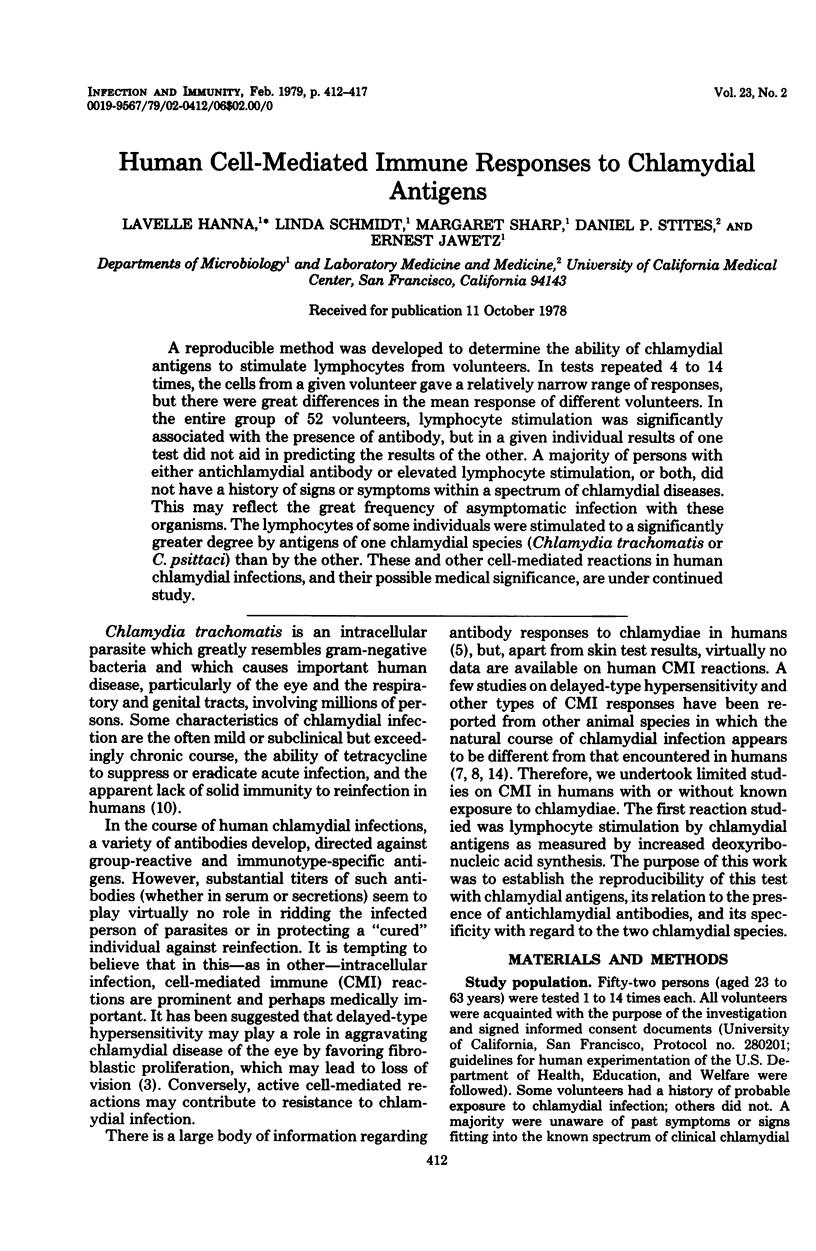
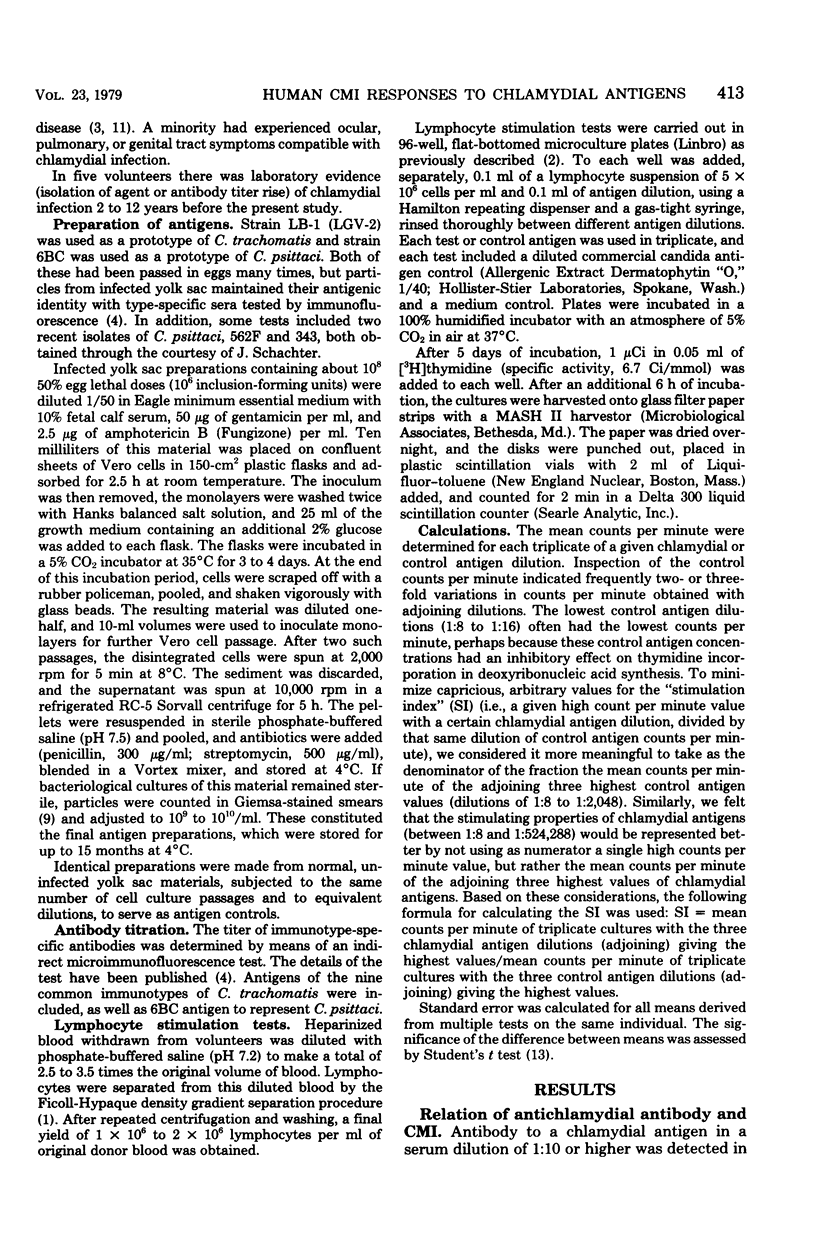
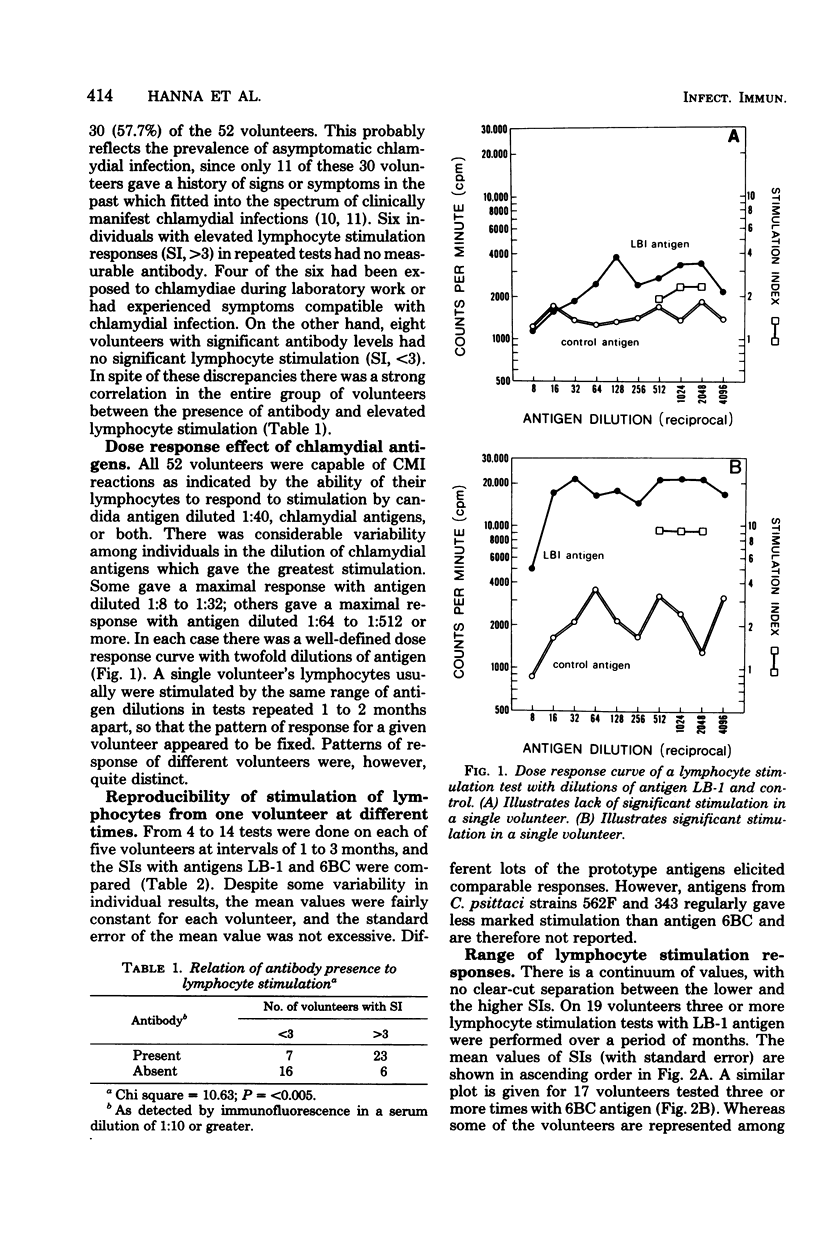
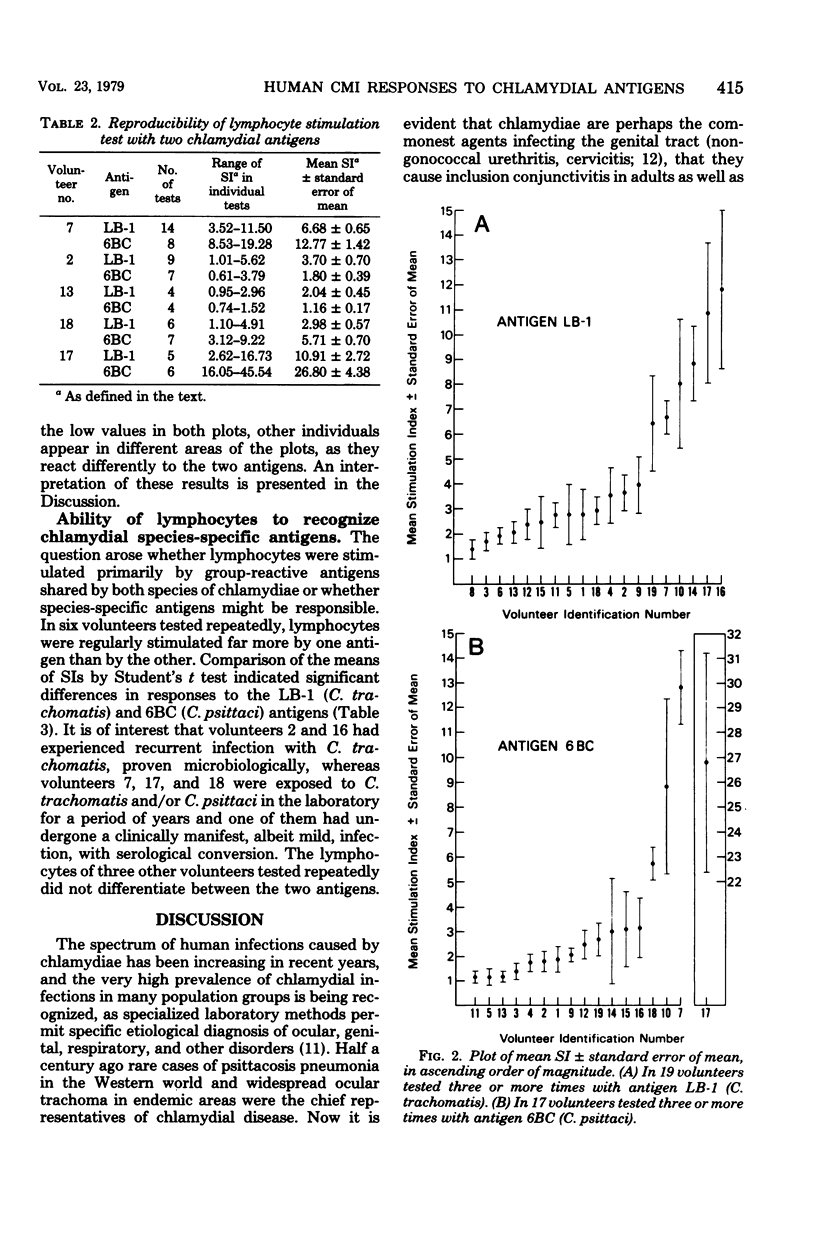

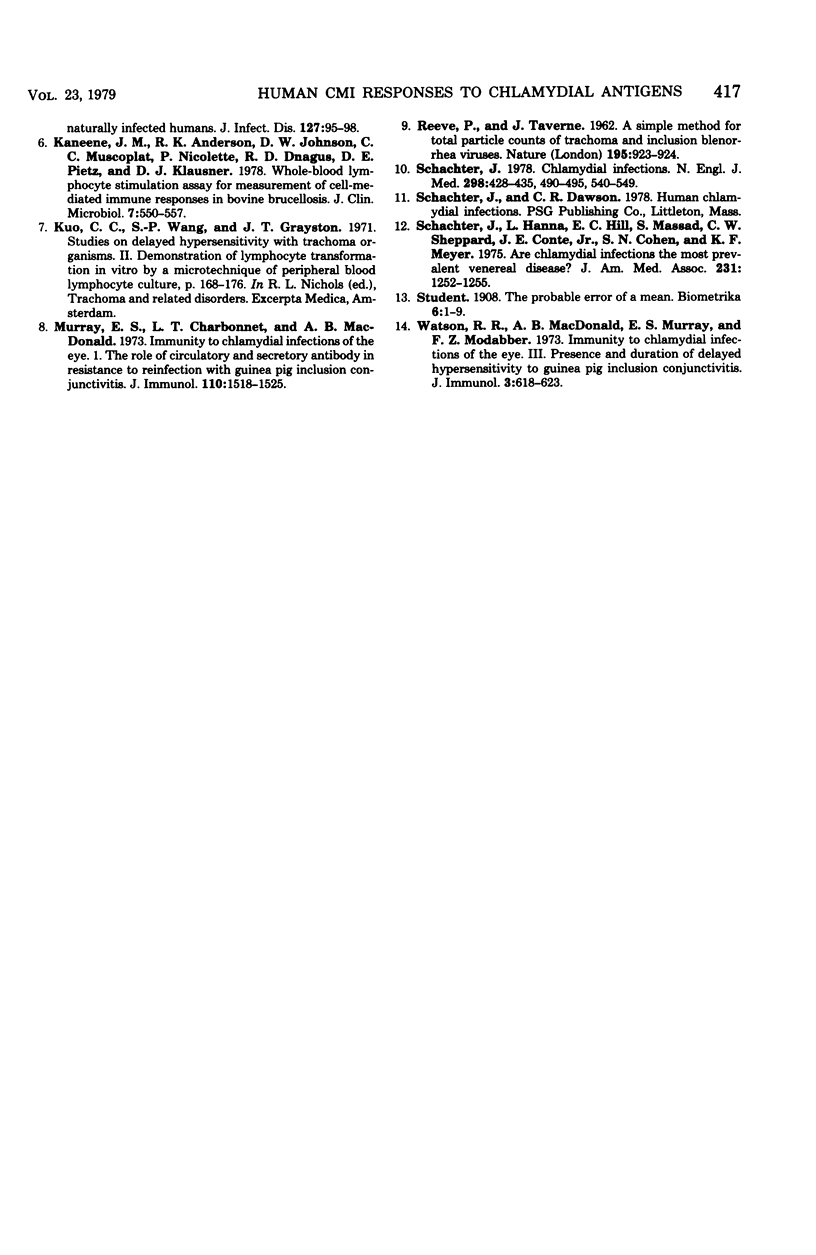
Selected References
These references are in PubMed. This may not be the complete list of references from this article.
- Böyum A. Isolation of mononuclear cells and granulocytes from human blood. Isolation of monuclear cells by one centrifugation, and of granulocytes by combining centrifugation and sedimentation at 1 g. Scand J Clin Lab Invest Suppl. 1968;97:77–89. [PubMed] [Google Scholar]
- Caldwell J. L., Stites D. P., Fudenberg H. H. Human chorionic gonadotropin: effects of crude and purified preparations on lymphocyte responses to phytohemagglutinin and allogenenic stimulation. J Immunol. 1975 Nov;115(5):1249–1253. [PubMed] [Google Scholar]
- Grayston J. T., Wang S. New knowledge of chlamydiae and the diseases they cause. J Infect Dis. 1975 Jul;132(1):87–105. doi: 10.1093/infdis/132.1.87. [DOI] [PubMed] [Google Scholar]
- Hanna L., Jawetz E., Briones O. C., Keshishyan H., Hoshiwara I., Ostler H. B., Dawson C. R. Antibodies to TRIC agents in tears and serum of naturally infected humans. J Infect Dis. 1973 Jan;127(1):95–98. doi: 10.1093/infdis/127.1.95. [DOI] [PubMed] [Google Scholar]
- Hanna L., Jawetz E., Nabli B., Hoshiwara I., Ostler B., Dawson C. Titration and typing of serum antibodies in TRIC infections by immunofluorescence. J Immunol. 1972 Jan;108(1):102–107. [PubMed] [Google Scholar]
- Kaneene J. M., Anderson R. K., Johnson D. W., Muscoplat C. C., Nicoletti P., Angus R. D., Pietz D. E., Klausner D. J. Whole-blood lymphocyte stimulation assay for measurement of cell-mediated immune responses in bovine brucellosis. J Clin Microbiol. 1978 Jun;7(6):550–557. doi: 10.1128/jcm.7.6.550-557.1978. [DOI] [PMC free article] [PubMed] [Google Scholar]
- Murray E. S., Charbonnet L. T., MacDonald A. B. Immunity to chlamydial infections of the eye. I. The role of circulatory and secretory antibodies in resistance to reinfection with guinea pig inclusion conjunctivitis. J Immunol. 1973 Jun;110(6):1518–1525. [PubMed] [Google Scholar]
- REEVE P., TAVERNE J. A simple method for total particle counts of trachoma and inclusion blennorrhoea viruses. Nature. 1962 Sep 1;195:923–924. doi: 10.1038/195923a0. [DOI] [PubMed] [Google Scholar]
- Schachter J. Chlamydial infections (third of three parts). N Engl J Med. 1978 Mar 9;298(10):540–549. doi: 10.1056/NEJM197803092981005. [DOI] [PubMed] [Google Scholar]
- Schachter J., Hanna L., Hill E. C., Massad S., Sheppard C. W., Conte J. E., Jr, Cohen S. N., Meyer K. F. Are chlamydial infections the most prevalent venereal disease? JAMA. 1975 Mar 24;231(12):1252–1255. [PubMed] [Google Scholar]
- Watson R. R., MacDonald A. B., Murray E. S., Modabber F. Z. Immunity to chlamydial infections of the eye. 3. Presence and duration of delayed hypersensitivity to guinea pig inclusion conjuctivitis. J Immunol. 1973 Aug;111(2):618–623. [PubMed] [Google Scholar]


